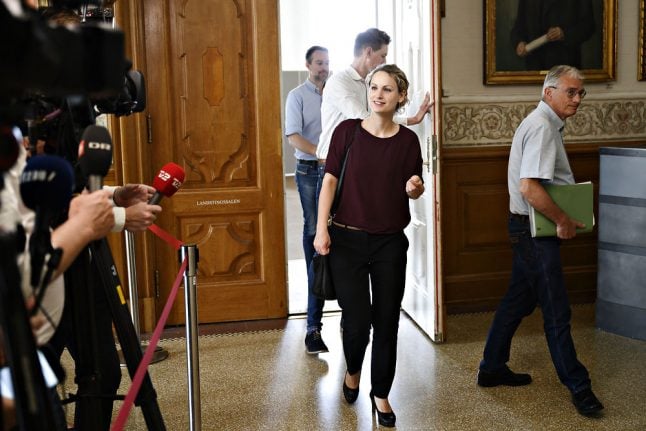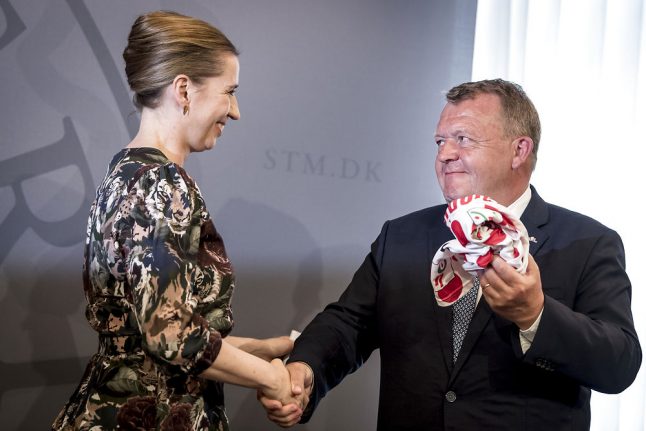On Tuesday, leader of the Red Green Alliance Pernille Skipper said that she “did not have the solution” for an alternative plan to accommodate foreign nationals convicted of crimes and sentenced to deportation.
The current plan, passed by the outgoing government, provides for a facility on the island of Lindholm. The move was controversial for its high cost to the Danish state and symbolic message – Lindholm is an uninhabited island.
But businesses and members of the public in the area near Kærshovedgård, where the individuals are currently accommodated together with rejected asylum seekers who have not committed any crime, have expressed feelings of insecurity, with one incident of assault and several of petty theft reported.
“Our approach is that it is not easy to resolve the situation regarding Lindholm, but one thing is certain: it’s a bad idea to keep (convicted foreign nationals) on a deserted island,” Skipper told Ritzau.
The three other parties in the traditional ‘red bloc' on the left of the Danish parliament — the Social Liberals, Socialist People's Party (SF) and Red Green Alliance – are crucial to forming the new government, because it is the left-wing parties who must vote to confirm Frederiksen as prime minister in a Social Democrat minority administration.
That means these parties can demand policy concessions from Frederiksen in the negotiations – hence the emergence of divisive, specific issues like Lindholm as obstacles in the talks.
Here are four further areas that are potential roadblocks to a new government.
Quota refugees
Since 2016, Denmark has refused to accept quota refugees from UN camps in areas close to conflict zones. The Social Liberals and SF both want to reverse that policy such that Denmark resumes taking in 500 quota refugees annually from this year.
The Social Democrats have not dismissed taking in quota refugees again and have in fact said they would accept UN refugees with particular needs, such as people with disabilities. No agreement on numbers has been confirmed between the parties at the time of writing.
The ‘paradigm shift’ law
Passed in February by the outgoing government – with the support of the Social Democrats – the paradigm shift moved Denmark’s official policy on refugees from integration to future repatriation including of UN quota refugees and others who do not have permanent status.
This could cause issues for Frederiksen, particularly with the Social Liberals, whose leader Morten Østergaard has demanded the policies be rolled back.
Staff-child ratios at childcare facilities
Earlier this year, parents demonstrated en masse for state investment in Denmark’s municipal childcare facilities, such that a minimum ratio of staff to children could be guaranteed at kindergartens and nurseries.
While Frederiksen has said she is prepared spend on the area, she has stopped short of guaranteeing ratios, saying improvements are also needed elsewhere.
But SF leader Pia Olsen Dyhr looks likely to press hard over the issue, which has proved to be one which has leverage with a large segment of the electorate.
Social welfare
Successive governments have reduced the amounts individuals can receive in social welfare, notably an upper limit on the amount a household can be entitled to (kontanthjælpsloftet), and a rule which states that after one year of unemployment, an individual must have worked 225 hours within the last three years in order to receive the full benefit.
While some reports credit these policies with contributing to helping people leave the benefits system, critics have said they are putting more families under or close to the poverty line.
Meanwhile, all left-wing parties with the exception of the Social Democrats also want the reduced form of welfare for recently-arrived foreign nationals including refugees (integrationsydelsen) to be scrapped.
Frederiksen has said that the immigration approach of the previous government will “broadly” be continued, and has instead promised a commission to look into all three welfare areas: the unemployment benefits limit; the 225-hour rule and the integration payment.
READ ALSO: What do Denmark's left-wing parties want in talks to form new government?



 Please whitelist us to continue reading.
Please whitelist us to continue reading.
Member comments